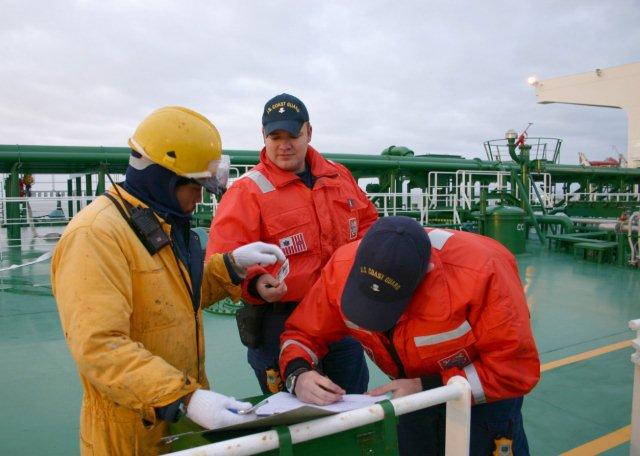

Ship Security Plan (SSP) is a plan that is formulated to ensure that that the measures laid out in the plan with respect to the security of the ship are applied onboard.
This is in place to protect the personnel, cargo, cargo transport units, stores etc from any security-related risks.
The plan specifies responsibilities and procedures to counteract any anticipated threat to the vessel and her cargo.
The ISPS Code makes it mandatory for a vessel to have such a plan in place. The SSP must lay out the protective measures for each security level vis a vis ship related activities, access control onboard, monitoring of the restricted areas, cargo handling, receiving of stores/baggage etc.
The CSO must ensure that the ship is provided with such a plan commensurate with the ISPS Code. The SSP is a critical document, the information of which is to be restricted to designated personnel on board and not shared deliberately; the plan must be protected from unauthorised access or disclosure.


The SSP must address the following aspects:
It is important to remember that the SSP is NOT subject to inspection unless in a case specifically specified by the Code. Unless there is proper evidence to prove that the SSP has not been complied with, an inspection may not be allowed.
Even when there is a plausible cause for non-compliance, an inspection may only be carried out specifically with the aspects that violate the SSP and not an entire check on the SSP.
This can only be done with consent from the Master of the vessel. The Master always has the overriding authority to call the shots, especially when the safety and security of the vessel are in question.
If in the professional judgement (and experience) of the Master, there is a conflict in the operations of the ship in relation to the SSP, he may use temporary measures to upkeep the security until the conflict is resolved. Any such temporary measure must be, so far as practicable, be commensurate with the prevailing security level.
Unless implemented with diligence, the SSP will be a worthless piece of paper! The SSO must ensure that the SSP is implemented to the best possible extent to maintain its effectiveness.
From carrying out training and drills to specifying to personnel about their respective duties as per the SSP, the SSO is a vital entity in the implementation of the SSP.
Along with briefings and debriefings, an appraisal must also be carried out to check the level of contribution of the personnel.
With the dynamic nature of shipping, the SSO under the auspices of the Master must identify any shortcomings in the plan.
Remedial measures and a review of the same must be sent to the CSO as suggestions to keep the SSP updated as well as to ensure that the security aspect is upheld without any compromise.
Any such suggestions to bring about a change in the existing plan must be backed up by a thorough security assessment of the vessel.
Damage to shipping from entities that intending to pose threat is ever-changing. The security of the vessel is not just for namesake but for the very protection of the ship and its resources, the most valuable resource being the manpower.
It is therefore imperative to always assign due importance to the SSP and its implementation.
You might also like to read:
Disclaimer: The authors’ views expressed in this article do not necessarily reflect the views of The Marine Learners. Data and charts, if used, in the article have been sourced from available information and have not been authenticated by any statutory authority. The author and The Marine Learners do not claim it to be accurate nor accept any responsibility for the same. The views constitute only the opinions and do not constitute any guidelines or recommendation on any course of action to be followed by the reader.
The article or images cannot be reproduced, copied, shared or used in any form without the permission of the author and The Marine Learners.










We believe that knowledge is power, and we’re committed to empowering our readers with the information and resources they need to succeed in the merchant navy industry.
Whether you’re looking for advice on career planning, news and analysis, or just want to connect with other aspiring merchant navy applicants, The Marine Learners is the place to be.